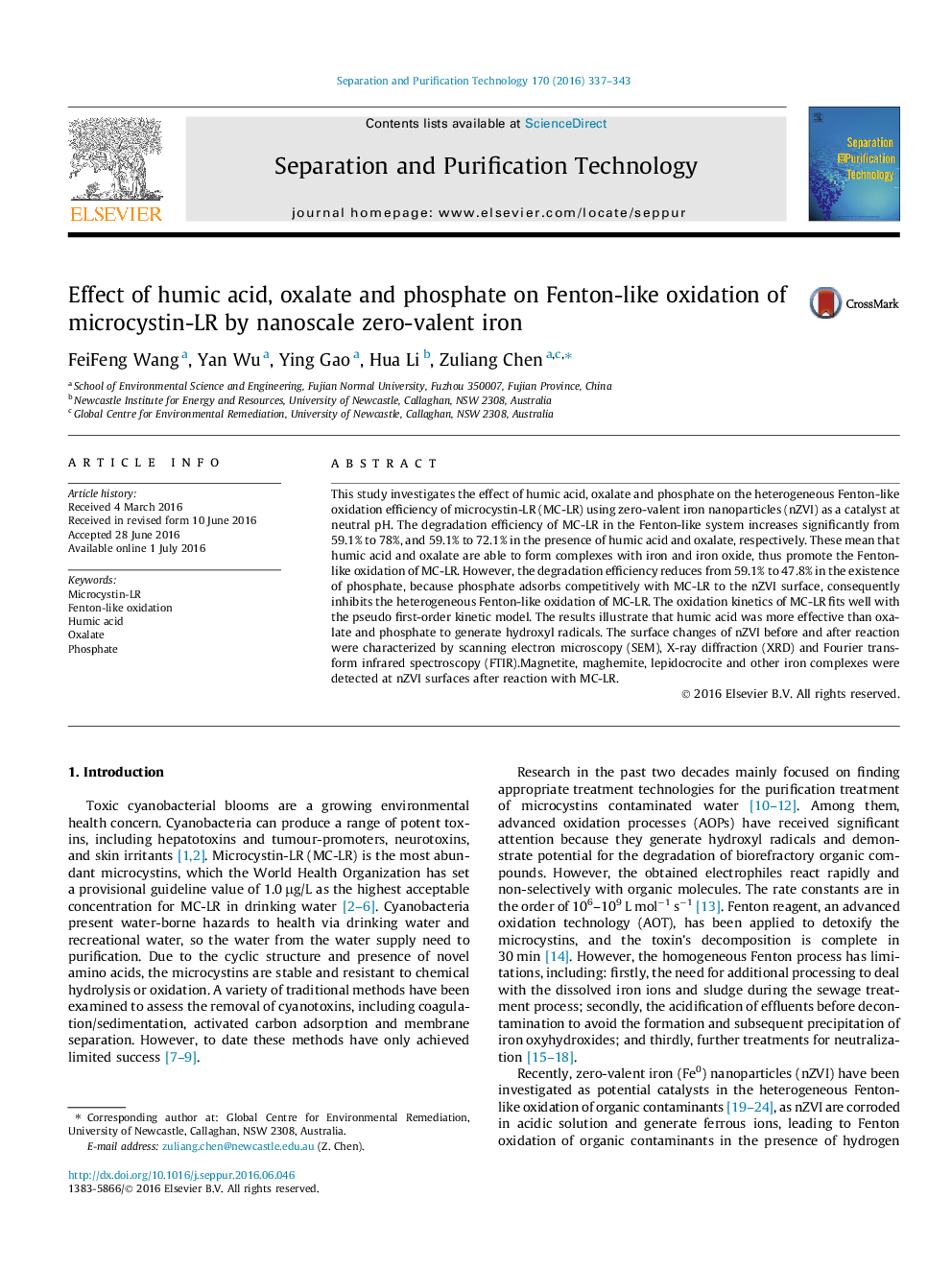| Article ID | Journal | Published Year | Pages | File Type |
|---|---|---|---|---|
| 639834 | Separation and Purification Technology | 2016 | 7 Pages |
•nZVI can be used for Fenton oxidation of MC-LR at neutral pH.•Humic acid and oxalate promoted MC-LR degradation.•Phosphate inhibited the Fenton-like oxidation of MC-LR.•A new insight of nZVI acted as the catalyst for remediation of MC-LR.
This study investigates the effect of humic acid, oxalate and phosphate on the heterogeneous Fenton-like oxidation efficiency of microcystin-LR (MC-LR) using zero-valent iron nanoparticles (nZVI) as a catalyst at neutral pH. The degradation efficiency of MC-LR in the Fenton-like system increases significantly from 59.1% to 78%, and 59.1% to 72.1% in the presence of humic acid and oxalate, respectively. These mean that humic acid and oxalate are able to form complexes with iron and iron oxide, thus promote the Fenton-like oxidation of MC-LR. However, the degradation efficiency reduces from 59.1% to 47.8% in the existence of phosphate, because phosphate adsorbs competitively with MC-LR to the nZVI surface, consequently inhibits the heterogeneous Fenton-like oxidation of MC-LR. The oxidation kinetics of MC-LR fits well with the pseudo first-order kinetic model. The results illustrate that humic acid was more effective than oxalate and phosphate to generate hydroxyl radicals. The surface changes of nZVI before and after reaction were characterized by scanning electron microscopy (SEM), X-ray diffraction (XRD) and Fourier transform infrared spectroscopy (FTIR).Magnetite, maghemite, lepidocrocite and other iron complexes were detected at nZVI surfaces after reaction with MC-LR.
